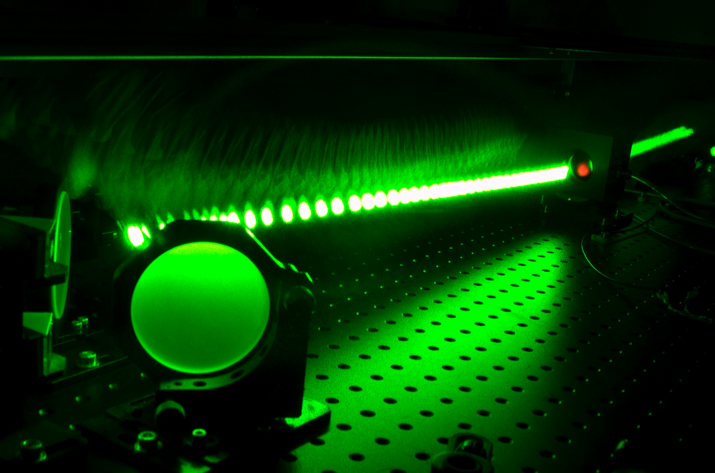
UNL has received nearly $2 million in federal stimulus funds from the National Science Foundation for renovations to expand its high-power laser research capabilities.
The $1,825,345 grant will enable UNL to renovate the sub-basement and basement of Behlen Laboratory. The project will convert outdated physics labs and offices into a state-of-the-art, high-power laser collaborative laboratory, known as the High Power Laser Science Collaboratory. The grant from NSF's Academic Research Infrastructure Program is funded through the American Recovery and Reinvestment Act of 2009.
"This renovation will give UNL and the U.S. one of the most powerful and versatile research laser laboratories in the world, creating the capability for potentially transformative research," said Prem Paul, vice chancellor for research and economic development.
The 4,991-square-foot expansion will create shared core research facilities adjacent to the Extreme Light Laboratory, home to the Diocles Laser, one of the world's most powerful lasers. The expansion will include five laboratories, collaborative research space for laser scientists and a chamber for a second high-power laser, to be built by UNL physicist Donald Umstadter and his team, with funding from the Air Force Office of Scientific Research. The facility, which adds the new laser to Diocles' capabilities, will place UNL among the top international leaders in laser science.
Construction is scheduled to be completed by fall 2012.
"This project allows us to significantly expand our capabilities for scientists to work at the frontier of laser research, which enables us to attract top faculty and students to UNL," said David Manderscheid, dean of the College of Arts and Sciences and project leader.
The Diocles Laser, also built by the UNL team, became operational in 2006 and has enabled studies that are putting UNL in the forefront of high-field physics and laser research. Diocles, with 1 petawatt (1 quadrillion watts - a 1 followed by 15 zeros) of power and ultra-fast repetition and pulse rates, has the potential to produce the highest light intensity ever created, but only for a brief moment. What sets it apart is its compact size. It is essentially a table-top laser with power equal to laser facilities hundreds of times larger. The new laser to be housed in the renovated space will offer new capabilities not now available at UNL. It will be less powerful (40 terrawatts, or 40 trillion watts) than Diocles, but will have a 10 times higher repetition rate, the highest of any in existence.
The High Power Laser Science Collaboratory will provide increased access and collaborative space for scientists and engineers pursuing basic research and innovative applications. Potential areas of research include molecular, optical, plasma and nuclear physics, materials science and medicine. Innovative applications include detection of shielded nuclear materials for homeland security, detection of cracks in turbine blades to prevent aircraft failure, generation of laser-accelerated protons for cancer therapy, imaging of ultra-fast chemical reactions and production of novel radiation sources.
- Vicki Miller, Research and Economic Development